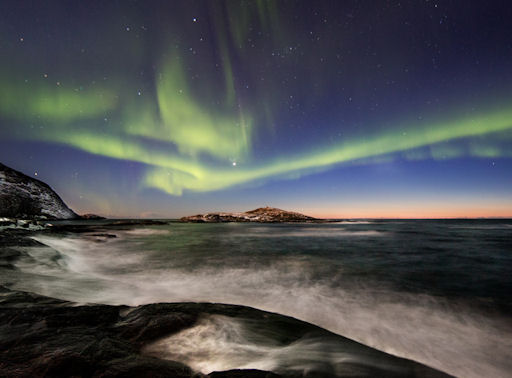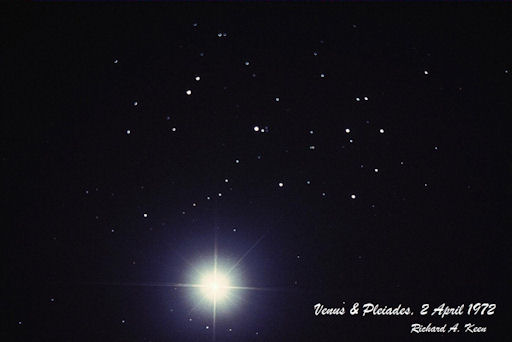Metallic photos of the sun by renowned photographer Greg Piepol bring together the best of art and science. Buy one or a whole set. They make a stellar gift. | | |
AURORA WATCH: A CME expected to reach Earth on April 4th is overdue. The cloud might have missed or maybe it's running late. Mindful of a possible impact, NOAA forecasters estimate a 15% chance of polar geomagnetic storms on April 5th. Aurora alerts: text, phone.
With the arrival of Spring, Arctic nights are growing shorter. "Soon, aurora season will be coming to an end," says Norwegian photographer Thorbjørn Riise Haagensen. "But it's not over yet." Last night Haagensen photographed this scene over Hillesøy, Norway:

"Beginning in the middle of May, the midnight sun brings sunshine all night long," he says. "Already some daylight is visible at the horizon at midnight. There is still enough darkness, though, for the last dance of the auroras."
more images: from Bob Conzemius of Grand Rapids, Minnesota; from Gilles Boutin of Ivujivik Nunavik Canada; from Frank Olsen of Blokken in Sortland, Norway; from Helge Mortensen of Kvaløya, Norway; from Ole C. Salomonsen of Sommarøy, Tromsø, Norway; from Thilo Bubek of Tromsø, Norway;
HEAVENLY DEJA VU: At first glance, the picture below looks exactly like thousands of others taken this week as Venus passed through the Pleaides star cluster. Look again. The date in the corner says "April 1972." Richard Keen of Boulder, Colorado, took the picture 40 years ago:

Talk about deja vu!
"Thanks to its orbit, Venus' appearance in the sky repeats itself almost exactly every 8 years," explains Keen. "Forty years ago, on April 2, 1972, Venus passed by the Pleiades only half a degree from its position two days ago. It's fun to compare this photo I took back in 1972 with this week's wonderful images."
Venus is exiting the Pleiades now, but as Keen's snapshot shows, there will be a next time--eight years from now to be exact. The next Venus-Pleaides conjunction is due in April 2020. Until then....
more images: from Miguel Claro of Fonte-de-Telha, Portugal; from John Chumack of Mill Creek, Texas; from Carl Bernhardt of Lone Pine, CA; from Laurent Laveder of Pluguffan, Brittany, France; from Aissa Moussa Mohammed of Guerrara, Ghardaia, Algeria; from Kosma Coronaios of Louis Trichardt, Limpopo Province, South Africa; from Göran Strand of Frösön, Sweden; from Alan C Tough of Elgin, Moray, Scotland; from Vesa Vauhkonen of Rautalampi, Finland; from Viktor Veres of Budapest, Hungary; from Andy Dodson of New Plymouth, New Zealand; from Amirreza Kamkar of Qayen-Iran

